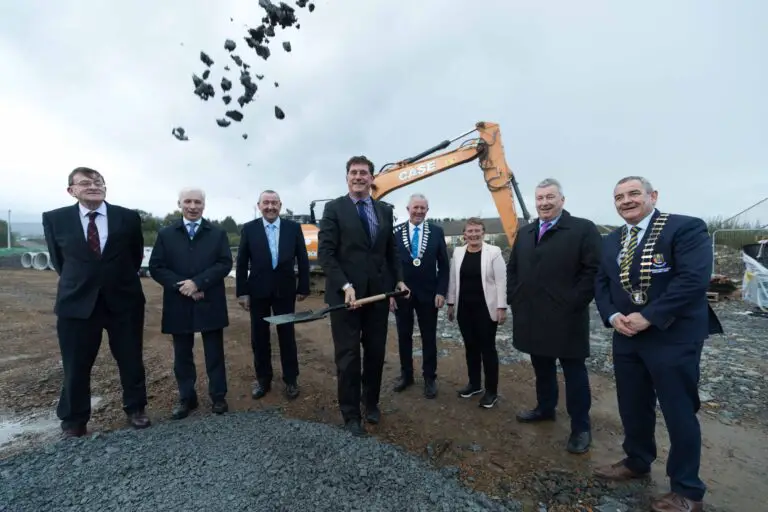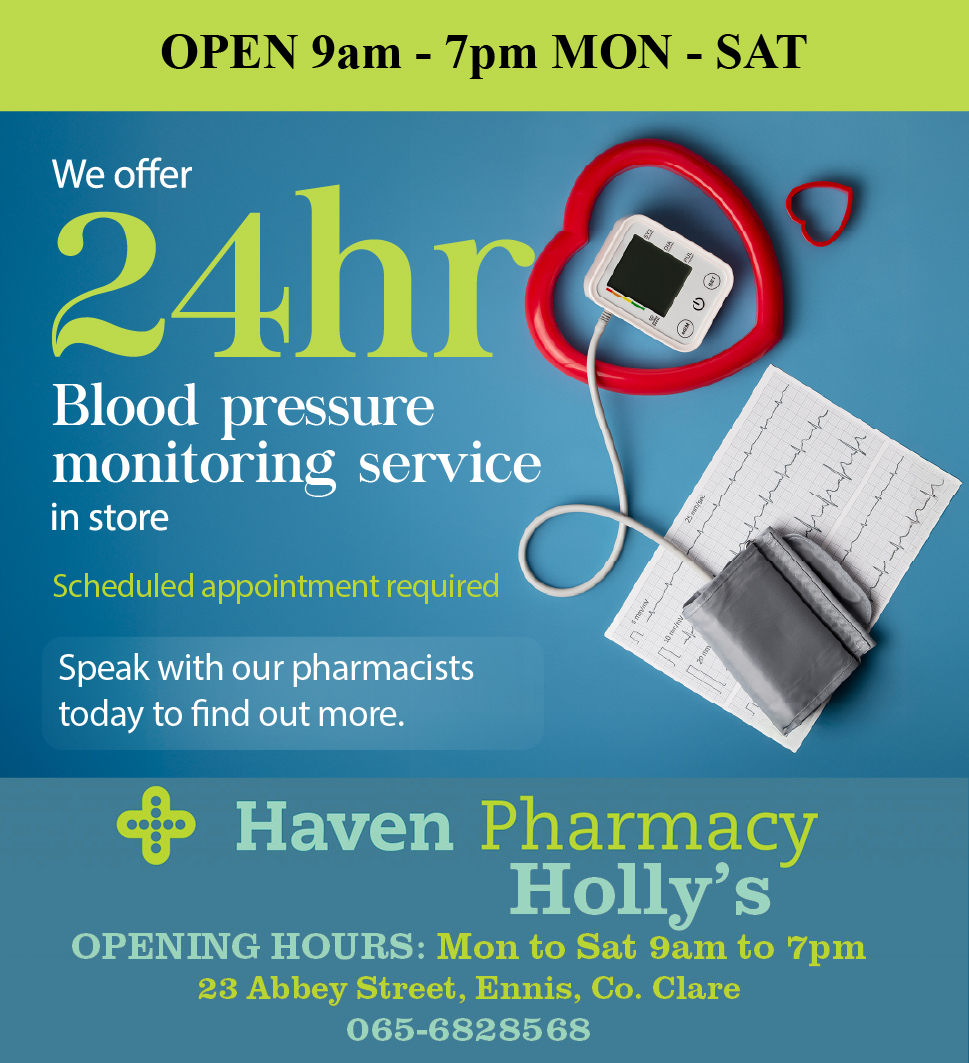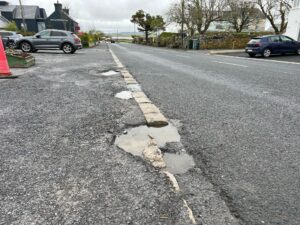“AN EXCITING FUTURE” has been signalled with the turning of the sod for the new Killaloe Bypass, Shannon Bridge Crossing and R494 Improvement Scheme.
A western bypass around Killaloe, a new bridge crossing of the River Shannon and an upgrade of the existing R494 regional road from Ballina to Birdhill will all be provided as part of the project. The entire scheme is over 6km in length and will cross the River Shannon approximately 1km downstream of the existing Killaloe Bridge.
Minister for Transport, Eamon Ryan (GP) approved the awarding of the contract for the project in December 2021 with John Sisk & Son appointed earlier this year. The works are expected to take three years to complete and progress with the scheme follows many false dawns, the widening of the Killaloe Bridge had been proposed in the late 1990s.
Clare County Council are leading the project team which also consists of Tipperary County Council, the Department of Transport and scheme consultants, RPS Consulting Engineers.
There are three sections to the scheme. The Killaloe Bypass aims to create a western bypass around the town of Killaloe which will connect the R463 to the north of the town with the proposed Shannon Bridge Crossing section and R463 to the south of the town. The Shannon Bridge crossing will cross the River Shannon approximately 1km south of the existing Killaloe Bridge and will connect the proposed Killaloe Bypass with the R494 at a new roundabout at Roolagh. The final part is the R494 upgrade which will involve widening, regrading and local realignment of the R494 from the aforementioned new roundabout at Roolagh to its junction with the R445 (former N7) north of Birdhill.
Speaking to The Clare Echo, Minister Ryan outlined that he was fully behind the project. “We’ve been saying we need to put town centres first and for the people in Killaloe and Ballina this is a big step forward because it will take the through traffic out and everyone knows the current bridge doesn’t work and this will be a help for the towns and the hinterland but more than anything else it will create a really vibrant local environment for the people of Killaloe and Ballina”.
He acknowledged it was “a major infrastructural project of strategic importance to the Mid-West region” and that the Government had “a real job to do at political level” in the areas of water and housing infrastructure. Benefits to the project include safer roads, less town centre congestion, smarter travel with the delivery of dedicated pedestrian and cycle network along the entire scheme, safer access to public transport, and the promotion of safe walking and cycling to work, schools and to both town centres, Minster Ryan affirmed. He added, “It’s for local people we do this, it’s for local communities, towns and villages where this is made”.
Mayor of Clare, Cllr Tony O’Brien (FF) stated “despite recent events and turmoil, there has been proactive engagement to ensure this work goes ahead”. He continued, “it is great news not just for Killaloe and Ballina or the counties of Clare and Tipperary but the whole region, this has been years in the making and it is fantastic that the work is underway”.
Chief Executive of Clare County Council, Pat Dowling quipped the partnership between Clare and Tipperary on the project might lead to the counties sharing Liam MacCarthy in the next two years but he was reminded by his Tipperary counterpart, Joe MacGrath of the dominant Limerick team of this era.
Addressing the event to mark the turning of the sod, Dowling acknowledged that lack of progress with the scheme had “long been a source of debate and frustration but today is a landmark event and it signals an exciting future”. He flagged that the project would bring an economic, social and community benefit. He referenced the Killaloe-Ballina Town Enhancement and Mobility Plan and the “inspired goal of two towns in one community”. Long-term benefits “will outweigh and negate the short-term pain,” he advised. Dowling concluded, “it has been a long time coming but it will allow for the local, regional and national development of the area”.
Journey time savings, improved accessibility and connectivity, as well as many other environmental, tourism and health benefits will accrue from the new scheme, Clare County Council’s Director of Physical Development, Carmel Kirby maintained.
Seán Lenihan of the Council’s project management office who are leading the project noted that the scheme had been “a long time in the making and it wasn’t without its challenges but we won’t get into the history because we’re looking forward, it’s onwards and upwards”. He cautioned, “As in all major capital works, there will be disturbance and disruption during construction. This is unavoidable but will be monitored, mitigated and kept to an absolute minimum”.
According to Cathaoirleach of Tipperary County Council, Cllr Roger Kennedy (FF), “This event today is a tribute to the tremendous cooperation between Clare and Tipperary County Councils over the last 15 years since the project was first mooted. The project is a unique opportunity to open up further East Clare and North West Tipperary to international and national tourism. It really complements the investment in the Lough Derg region as a major attraction in Ireland’s Hidden Heartlands.”
Joe MacGrath, Chief Executive, Tipperary County Council, commented, “The twin towns of Killaloe and Ballina will be finally rid of traffic congestion and they will be able to develop together as a stunning location to live in or visit on the River Shannon.”
A new plan for the future of the twin towns of Killaloe-Ballina was approved by Clare and Tipperary County Councils at their December 2021 meetings and took effect from January 2022. The Killaloe-Ballina Town Enhancement and Mobility Plan aims to facilitate a co-ordinated approach to public realm enhancements within Killaloe in County Clare and Ballina in County Tipperary, providing a clear vision for Killaloe and Ballina as linked settlements. The plan provides opportunities to capitalise on the towns’ assets to collectively expand the tourism product, attract increased visitor numbers and maximise local economic benefits.


















